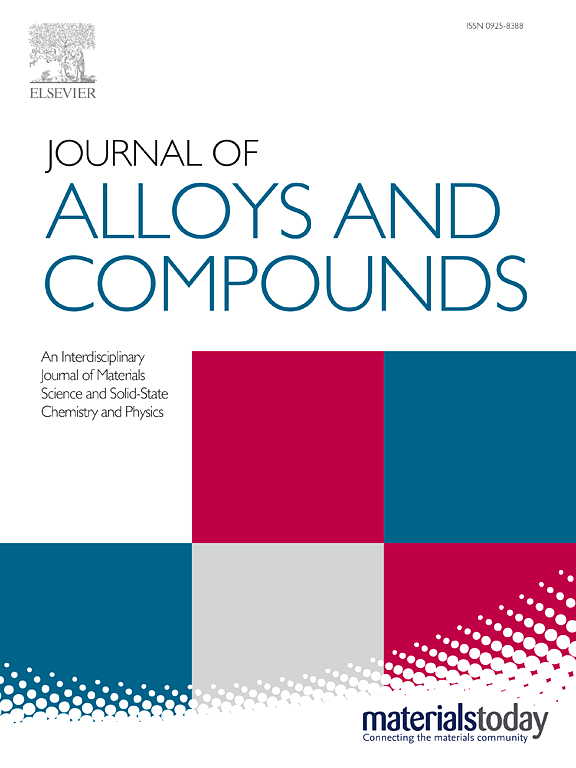锚定在还原氧化石墨烯上的珊瑚状3D-Co纳米花增强NaBH4的产氢
IF 5.8
2区 材料科学
Q2 CHEMISTRY, PHYSICAL
引用次数: 0
摘要
硼氢化钠(NaBH4)因其极显著的储氢能力而被认为是一种重要的储氢材料。然而,通过NaBH4水解实现大规模制氢需要高效的催化剂来提高析氢效率。在这项研究中,提出了一种简单的一锅合成方法,制备了由超薄钴基纳米片(Co-3DHFLM)锚定在氧化石墨烯(GO)上的三维分层花状材料,提高了活性钴位点的分散性。制备的3D-Co催化剂通过高温氢还原固定在还原氧化石墨烯(rGO)上,可以促进活性位点从平面纳米花结构重排到更多孔的珊瑚状结构,从而提高催化剂的稳定性和催化活性。此外,系统研究了氧化石墨烯添加量和还原温度对催化剂性能的影响。还原温度为773 K时,3D-Co@rGO15催化剂在303 K下的产氢速率为4251.1 mL·min-1·gCo-1,活化能为28.1 kJ·mol-1。结果表明,通过调节催化剂的形态和结构可以显著提高催化效率,为高效复合催化剂的设计提供了新的思路。本文章由计算机程序翻译,如有差异,请以英文原文为准。
Coral-Like 3D-Co Nanoflowers Anchored on Reduced Graphene Oxide for Enhancing Hydrogen Generation of NaBH4
Sodium borohydride (NaBH4) is recognized as an important material for hydrogen storage and transportation because of its extremely significant hydrogen storage capacity. However, achieving large-scale hydrogen generation via the hydrolysis of NaBH4 requires efficient catalysts to enhance hydrogen evolution efficiency. In this study, a simple one-pot synthesis method was proposed to prepare 3D hierarchical flower-like materials composed of ultrathin cobalt based nanosheets(Co-3DHFLM) anchored on graphene oxide (GO), improving the dispersion of active cobalt sites. The yielded 3D-Co catalysts anchored on reduced graphene oxide (rGO) by high-temperature hydrogen reduction, can promote the structural rearrangement of active sites from planar nanoflowers to a more porous coral-like structure, thereby enhancing the stability and catalytic activity of the catalyst. Additionally, the effects of GO addition amounts and reduction temperatures on catalyst performance were systematically investigated. At a reduction temperature of 773 K, 3D-Co@rGO15 catalyst achieved the hydrogen generation rate of 4251.1 mL·min-1·gCo-1 at 303 K with an activation energy of 28.1 kJ·mol-1. The results demonstrate that significant improvements in catalytic efficiency can be achieved by modulating the morphology and structure of the catalyst, providing new insights for the design of efficient composite catalysts.
求助全文
通过发布文献求助,成功后即可免费获取论文全文。
去求助
来源期刊

Journal of Alloys and Compounds
工程技术-材料科学:综合
CiteScore
11.10
自引率
14.50%
发文量
5146
审稿时长
67 days
期刊介绍:
The Journal of Alloys and Compounds is intended to serve as an international medium for the publication of work on solid materials comprising compounds as well as alloys. Its great strength lies in the diversity of discipline which it encompasses, drawing together results from materials science, solid-state chemistry and physics.
 求助内容:
求助内容: 应助结果提醒方式:
应助结果提醒方式:


